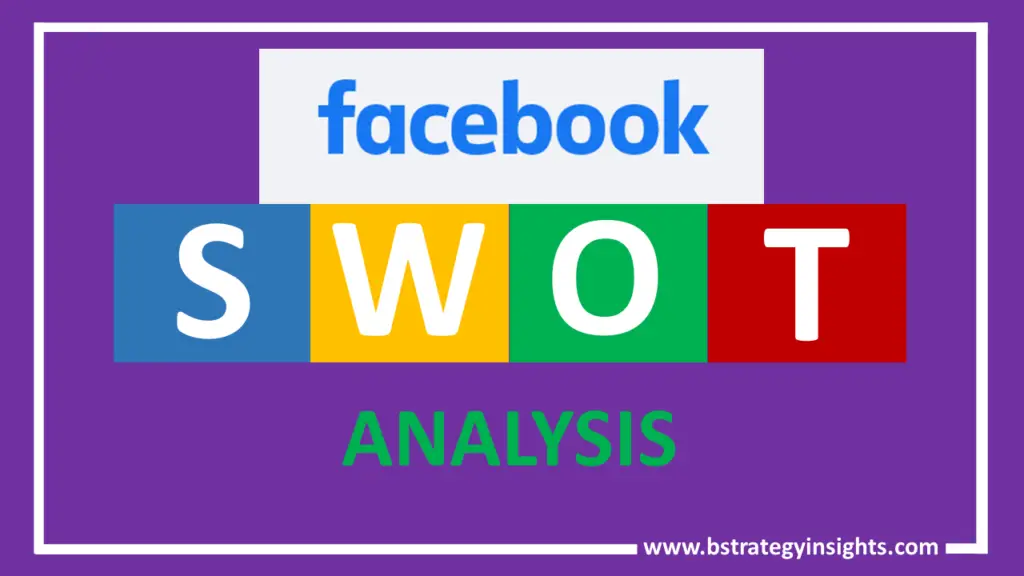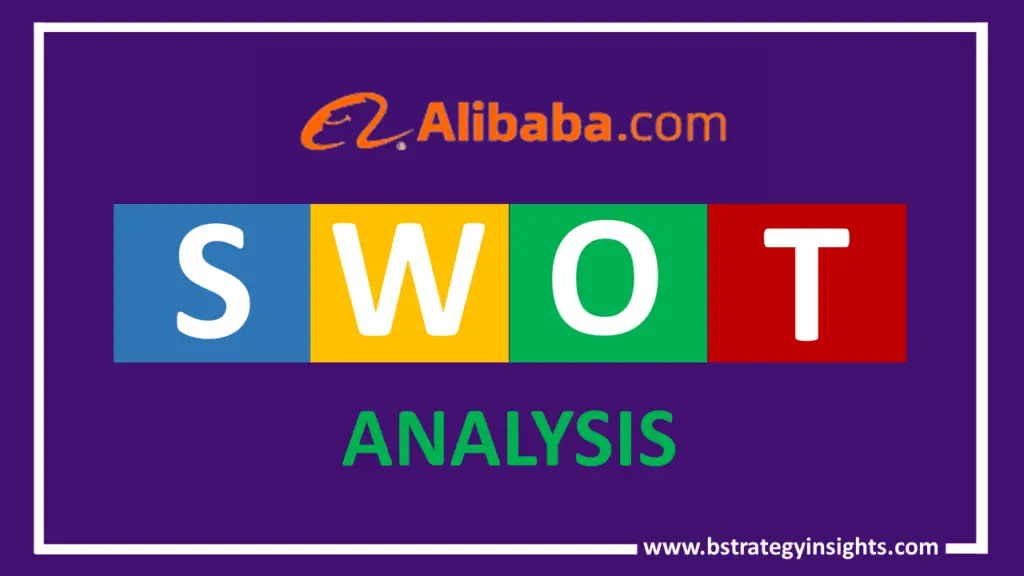
Facebook is a leading social media platform with over 2.7 billion monthly active users as of December 2021. The company was founded in 2004 by Mark Zuckerberg and initially focused on connecting college students but it has since grown to become one of the most popular and influential social media platforms in the world. Facebook generates revenue through a variety of sources, including advertising, the sale of virtual goods, and subscription fees for premium features.
A SWOT analysis is a tool used to evaluate the strengths, weaknesses, opportunities, and threats of a business or organization. It is a strategic planning method that helps businesses to identify and understand the factors that may influence their success or failure. In this SWOT analysis, we will examine the internal and external factors that can impact Facebook’s performance and strategic options.
Facebook – At a Glance
| Name | |
| Website | https://www.facebook.com/ |
| Founders | Mark Zuckerberg, Chris Hughes, Dustin Moskovitz, Eduardo Saverin |
| Chief Executive Officer (C.E.O.) | Mark Zuckerberg |
| Headquarters | United States |
| Year Founded | February 4, 2004 |
| Type of company | Public |
| Revenues (FY 2021) | $117.9 Billion |
| Key Products/Services | Facebook Dating, Social Media Platform, Messenger, WhatsApp, Workplace – Business Tool, Oculus –Virtual Reality Device, Marketplace, Watch, News Feed, Stories |
| Key Competitors | Snapchat, TikTok, LinkedIn, Twitter, YouTube, Google, Amazon, PinInterest, Letgo, eBay, Venmo, Apple, WeChat, |
Facebook’s Strengths
Large User Base
Facebook’s user base is one of its biggest strengths. Facebook has over 2.7 billion monthly active users as of December 2021, making it one of the most widely used social media platforms in the world. This large user base allows Facebook to reach a wide audience and provides a valuable platform for businesses to advertise and connect with potential customers.
In addition, Facebook’s user base includes a diverse range of demographics, which can help the company to tailor its offerings and appeal to a wide range of audiences. This way, the brand is able to generate more revenue for itself and provide business solutions for its customers.
Diverse revenue streams
Facebook generates revenue from a variety of sources, including advertising, the sale of virtual goods, and subscription fees for premium features. This diversification helps to protect the company from reliance on any single revenue stream. It also acts as a buffer against changes in the market or shifts in consumer behavior.
Advertising is the primary source of revenue for Facebook, accounting for approximately 98% of the company’s total revenue in 2020. However, the company also generates significant revenue from the sale of virtual goods, such as virtual currency and in-game items, through its gaming platform, as well as subscription fees for premium features, such as the ability to remove ads or access additional content on certain platforms.
Strong brand recognition
Facebook is a well-known and trusted brand with high levels of customer loyalty. This can help the company to attract new users and businesses and can also make it easier to introduce new products and features. The company’s strong brand recognition is supported by a large marketing budget, which helps to ensure that Facebook remains a top-of-mind choice for users and businesses looking to engage with customers through social media.
Integration with other platforms
Facebook has integrated its products and services with a range of other platforms, including mobile devices and messaging apps. This integration helps to make Facebook’s products and services more convenient and accessible for users and can also help to drive engagement and revenue. For example, the company’s Messenger platform allows users to communicate with friends and businesses through a standalone app, and its Instagram and WhatsApp platforms offer additional ways for users to connect and engage with content.
Strong financial performance
Facebook has consistently delivered strong financial results, with steady revenue and profit growth over the past several years. In 2020, the company generated total revenue of $86.3 billion, up from $70.7 billion in 2019. This strong financial performance is supported by the company’s large user base, diversified revenue streams, and strong brand recognition.
Facebook’s Weaknesses
Dependence on advertising revenue
While Facebook has a diverse range of revenue streams, advertising remains a significant source of income for the company. This dependence on advertising can make the company vulnerable to changes in the market or shifts in consumer behavior. For example, if advertisers reduce their spending on Facebook due to economic downturns or changes in consumer preferences, this could impact the company’s revenue and profitability.
Privacy concerns
Facebook has faced criticism and regulatory scrutiny over its handling of user data and privacy. This has led to concerns about the company’s ability to protect user privacy and maintain user trust, which could impact the company’s reputation and financial performance. In particular, the company has faced criticism for its handling of personal data, as well as its role in the spread of misinformation and propaganda. As a result, Facebook has faced regulatory fines and increased regulatory scrutiny in various markets around the world.
Competition
Facebook faces competition from other social media platforms, including newer platforms that may offer more innovative features or a more attractive user experience. In particular, the company faces competition from platforms that focus on specific niches, such as TikTok and Clubhouse, that have gained popularity in recent years and could potentially challenge Facebook’s position as a top social media platform.
Complex business model
Facebook’s business model is complex, with a range of products and services that are designed to keep users engaged and connected. This complexity can make it more difficult for the company to make strategic decisions and could also make it harder for investors and analysts to understand the company’s financial performance.
Dependence on user-generated content
A significant portion of the content on Facebook is generated by users rather than being created by the company itself. This reliance on user-generated content can make it more difficult for Facebook to
Facebook’s Opportunities
Expansion into a new market
Facebook has the opportunity to expand its user base and revenue streams by entering new markets or by introducing new products and services.
Partnerships and acquisitions
Facebook can also explore partnerships and acquisitions with other companies to expand its capabilities and reach.
Virtual and augmented reality
Facebook is investing in virtual and augmented reality technology, which could provide new opportunities for the company to innovate and differentiate itself from competitors.
Facebook’s Threats
Regulatory threats
Facebook has faced regulatory scrutiny in various markets around the world and could face additional regulatory challenges in the future. This could impact the company’s operations and financial performance.
Cybersecurity threats
As a major online platform, Facebook is also vulnerable to cybersecurity threats, including hacking and data breaches. This could compromise user data and damage the company’s reputation.
Economic downturns
Changes in economic conditions, such as recessions or economic slowdowns, could impact the demand for advertising and other products and services offered by Facebook.
Conclusion
The Facebook brand is a strong brand with huge financials, a strong customer base, and global reach. These strengths provide great market leverage for growth and expansion. The brand needs to continuously innovate in order to stay ahead of the competition and diversify its product range for more revenues.


